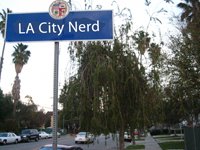Per City Charter (pay attention to section d):
Sec. 204. Election of City Council Members; Redistricting.
(a) Redistricting by Ordinance. Commencing in 2002, the Council shall by ordinance redraw district lines to be used for all elections of Council members, including their recall, and for filling any vacancy in the office of member of the Council, after the effective date of the redistricting ordinance. Districts so formed shall each contain, as nearly as practicable, equal portions of the total population of the City as shown by the Federal Census immediately preceding the formation of districts.
(b) Redistricting Commission. There shall be a Redistricting Commission to advise the Council on drawing of Council district lines. The Commission members shall be appointed in the following manner: one by each Council member except that the Council President shall appoint two members, three by the Mayor, one by the City Attorney, and one by the Controller. No City officer or employee shall be eligible to serve on the Commission. The Redistricting Commission shall appoint a director and other personnel, consistent with budgetary approval, which positions shall be exempt from the civil service provisions of the Charter.
(c) Redistricting Process. The Redistricting Commission shall be appointed no later than the date by which the Census Bureau is to release decennial census data. A new Commission shall be appointed to advise the Council prior to each subsequent redistricting. The Commission shall begin the redistricting process at any time after the necessary data are obtained from the most recent Federal Census, but no later than January 1, 2002, and each subsequent tenth anniversary of that date. The Commission shall seek public input throughout the redistricting process. The Commission shall present its proposal for redistricting to the Council no later than a date prescribed by ordinance.
The Council shall adopt a redistricting ordinance no later than July 1, 2002, and each subsequent tenth anniversary of that date. Nothing in this section shall prohibit the Council from redistricting with greater frequency provided that districts so formed each contain, as nearly as practicable, equal portions of the total population of the City as shown by the Federal Census immediately preceding the formation of districts or based upon other population reports or estimates determined by the Council to be substantially reliable.
(d) Criteria for Redistricting. All districts shall be drawn in conformance with requirements of state and federal law and, to the extent feasible, shall keep neighborhoods and communities intact, utilize natural boundaries or street lines, and be geographically compact.
(e) Effect of Redistricting on Incumbents. No change in the boundary or location of any district by redistricting shall operate to abolish or terminate the term of office of any member of the Council prior to expiration of the term of office for which the member was elected.


1 comment:
Thanks for the info! It's very enlightening. Not sure how much attention they paid to section d last time around. ;)
Post a Comment